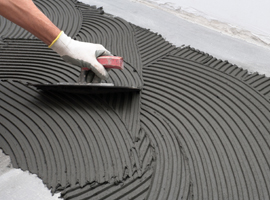Introduction
Tiling is an age-old practice that dates back thousands of years, with its origins traced to the ancient civilizations of Mesopotamia and Egypt. This versatile and enduring craft has since evolved and adapted to a wide range of applications, from functional and decorative designs to industrial and architectural solutions. This essay explores the various tiling methods, their history, and contemporary applications, highlighting the enduring relevance of this timeless craft.
Historical Background
The history of tiling can be traced to the oldest known civilization in the world, Sumer, where clay tiles were used for both practical and ornamental purposes. These early tiles served as not only a functional building material but also as a canvas for artistic expression, showcasing intricate patterns and designs. The Egyptians later adopted the practice, using tiles made of materials like limestone and clay to adorn their temples, palaces, and tombs. The Romans perfected the art of tiling by introducing tessellated mosaics, combining a variety of materials and colors to create intricate patterns that adorned their floors and walls.
Tiling Methods Through the Ages
Over time, various tiling methods emerged, each with its unique characteristics and applications. Some of the most prominent tiling methods include:
Mosaic Tiling: Mosaics involve the assembly of small, colored tiles or pieces to create intricate patterns and images. This method was popularized by the Romans and continues to be used in interior and exterior design, often seen in decorative art, religious sites, and public spaces.
Terracotta Tiling: Terracotta tiles, made from fired clay, are a durable and versatile option. These tiles are often used for flooring, roofing, and exterior cladding due to their natural and rustic appearance.
Ceramic and Porcelain Tiling: Ceramic and porcelain tiles have become popular in modern construction. They offer a vast array of colors, patterns, and textures, making them suitable for interior and exterior applications, from kitchen backsplashes to bathroom floors and even outdoor patios.
Glass Tiling: Glass tiles are prized for their ability to reflect and refract light, adding a touch of elegance to any space. They are frequently used in kitchens and bathrooms to create a sense of sophistication and style.
Contemporary Applications
Tiling methods have endured the test of time and continue to find new applications in modern society. Some of these applications include:
Interior Design: Tiling plays a crucial role in interior design, transforming mundane spaces into visually appealing and functional areas. Tiles can be used on floors, walls, and even ceilings to create unique atmospheres.
Architectural Design: Tiling methods are integral to architectural design, with tiles being used for both aesthetic and practical purposes. Tiled facades and exteriors offer durability and a wide range of design options.
Sustainable Building: Tiling methods have evolved to meet the demands of sustainable construction. Eco-friendly materials and designs are becoming increasingly popular, allowing for energy-efficient and environmentally responsible buildings.
Art and Decoration: Tiling remains a medium for artistic expression. Contemporary artists use tiles to create intricate mosaics and murals that enhance public spaces, adding a touch of creativity to urban environments.
Industrial Applications: Industrial settings benefit from the durability of tiling methods. Epoxy-coated or acid-resistant tiles are used in chemical plants, factories, and laboratories, providing a safe and clean working environment.
Conclusion
Tiling methods, rooted in history and tradition, continue to evolve to meet the demands of contemporary society. From their origins in ancient civilizations to their applications in modern interior and architectural design, tiling methods offer a timeless craft that blends function and aesthetics. As we look to the future, tiling methods will likely continue to adapt and innovate, ensuring their enduring relevance in a wide range of applications.

